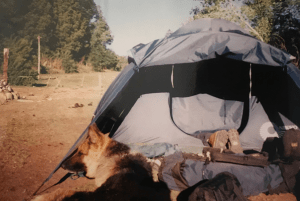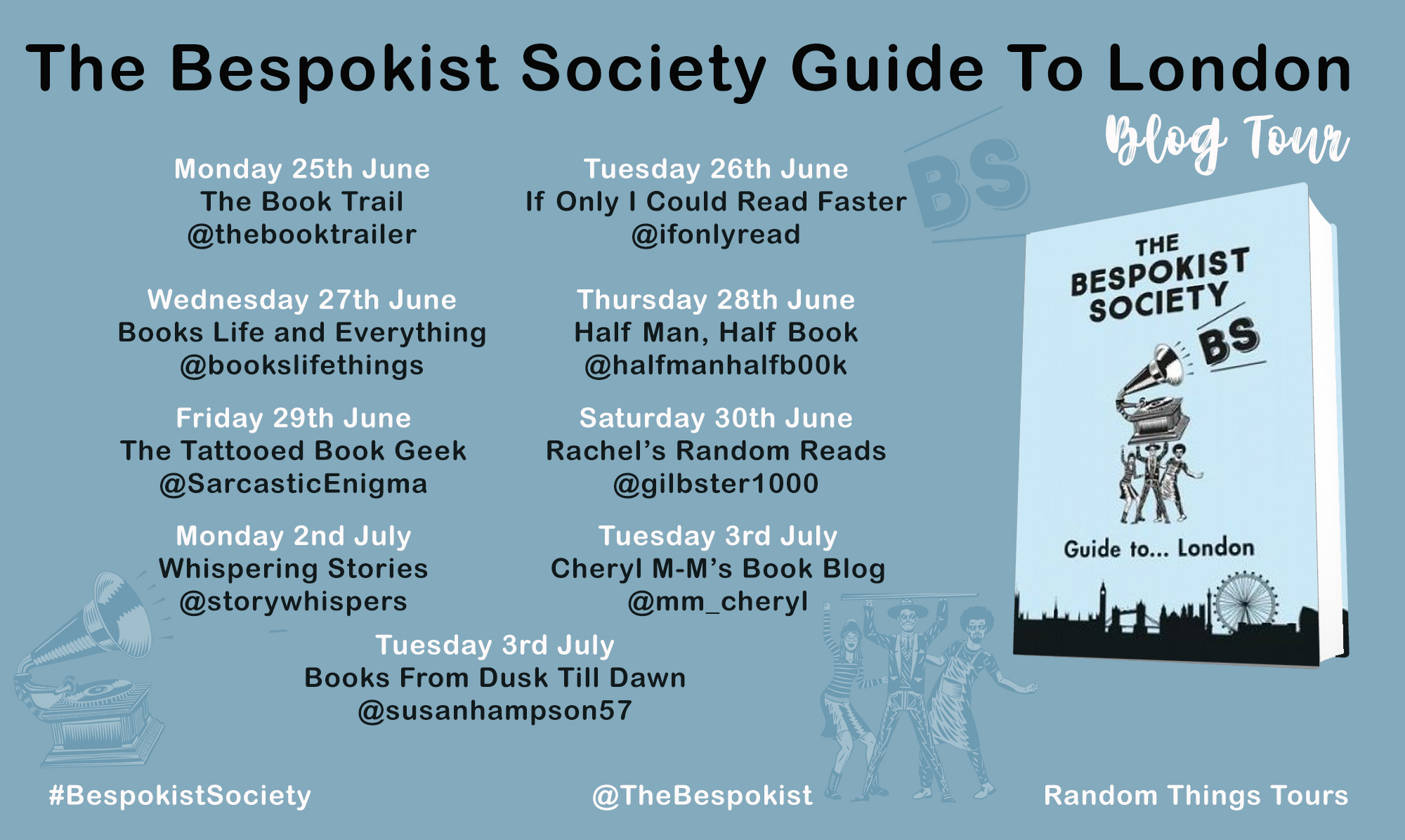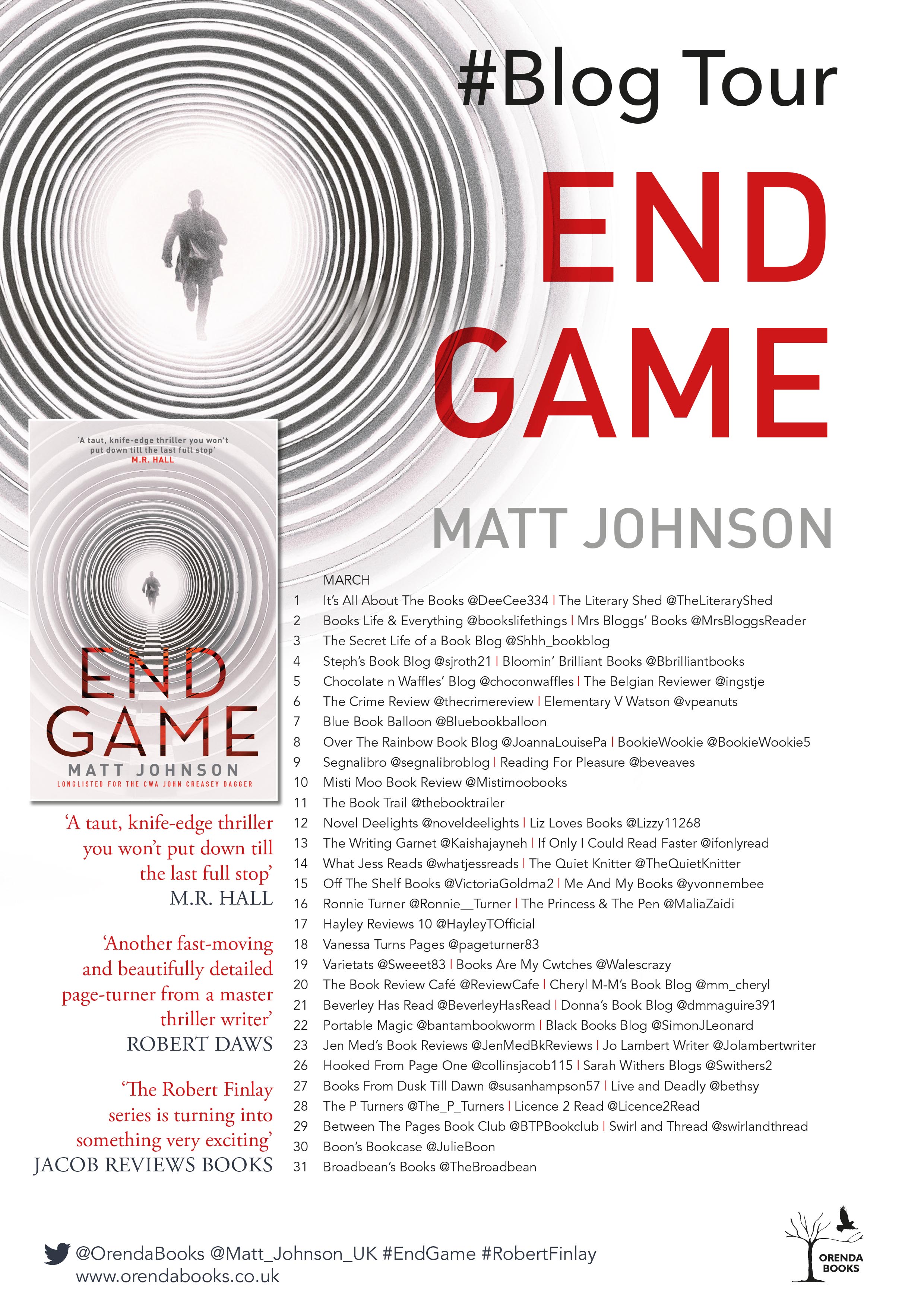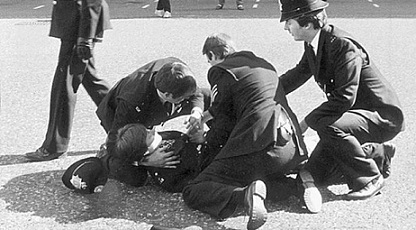
Sometimes a guest post comes along that draws you in and takes you by surprise. The post that I’m sharing below did that. I wasn’t really sure what to expect as I didn’t know what author Joel Hames was going to be writing about, but I absolutely love the story that he told. Read it, you won’t regret it. I think that this story could be a book in itself.
Guest Post:
Lancashire, and half a world away
Hello @ifonlyread, thank you for hosting me, and hello everyone else, thank you for reading.
What I’m about to share is a true story, and the inspiration for the main sub plot in my latest novel, Dead North. I’ve changed the name of the principal person involved, and altered the locations and the dates, slightly, so as to afford some privacy to those affected. But the heart of it is completely and utterly true.
It was the back end of the millennium. 18 months to go until planes started falling from the sky and the world burned, or so they’d have had us believe. And I was in Patagonia, kicking myself, because if there was one place you’d want to be when the world did burn, it would, as Bruce Chatwin had recognised decades earlier, be Patagonia, and I was 18 months early.
I’d been hiking through South America for six months, prior to starting a career as a lawyer. My wife-to-be had joined me in Argentina, and we’d bussed and hitched our way down through the country, eating steak and learning to tango in Buenos Aires, revelling at the beauty of the Argentine Lake District, watching whales and penguins and elephant seals in Puerto Madryn, until we hit the huge, majestic wilderness of Patagonia.
We’d loaded up for a long hike. Dried food, tiny gas cooker, handy little tent, a lighter that could start a fire in the face of the most relentless Patagonian wind. Less than two hours into that hike, with the wind biting at our faces through alpaca-fleece hats, a van pulled up on the track beside us and asked whether we wanted a lift.
“It’s OK,” we said, eyeing the driver suspiciously. Contrary to everything we’d been told, Argentina had been a wonderfully friendly and safe place for us, so far, but we were on a deserted stretch of road, probably tens of miles from the nearest human being, and it paid to be cautious.
“Are you sure?” His English was good, accented but clear. He looked to be in his early thirties, maybe, tall and lean, ruggedly handsome, as most of the Patagonian men, to my chagrin, seemed to be. “You look like you’re in for a long walk. But with me, you can go much further. And you can enjoy it more, too.”
We laughed and thanked him. “It’s OK,” we said. “We like being outside, not in the van.”
“Not in the van,” he replied, clearly affronted by the suggestion. “We drive to my place. There, we take the horses.”
Our eyes lit up.
Over the next week our unexpected angel, Max, gave us everything he’d said he would and more. On horseback, we trebled the journey we’d been planning by foot, and although our knees might have been sore after eight hours in the saddle, our backs certainly thanked us, with the horses taking the load. We lit fires and feasted on milanesa, on steak and cartons of local red wine, on fish caught in remote icy rivers while we looked on and drank more of that wine. We saw more of Patagonia than we’d believed possible. We retired each night to our own tent while Max insisted on sleeping under the stars. Every morning we strolled down to the nearest river or mountain tarn and took a quick, refreshing dip. We laughed more than we’d laughed in years. And we enjoyed the company of Max, one of the kindest, most open, most charming men I had met in my life.

Me and my wife-to-be crossing a river on our steeds, Hercules and Sorpresa

When it was all over we disappeared, down to Tierra del Fuego, where we sat on trains with all the other tourists and admired the landscape and the old colonial vestiges, and missed Max, and on our way back up again we dropped in on him, pitched our tent in his field, and stayed with him for our last few days in Argentina, riding, chatting, drinking wine, drinking maté, the strange, bitter tea the Argentines consume by the gallon through metal straws, feasting, meeting Max’s friends and loving every minute of it. On our last night we sat in the field while he cooked up a giant asado, a barbecue of beef and lamb and sausages, and played with his German Shepherd, who’d accompanied us on our trek and had an unerring ability to find the nearest lake or river. The dog was also called Max – that was the dog’s real name, but I’m not going to change either of their names for this, because whenever I see the word, or hear it, or type it, I’m back there in that field, lying back on the grass laughing about something stupid with strangers-turned-friends as Max-the-owner scratched Max-the-dog behind his ear.
Max-the-dog, and my feet

And then we went home.
We dropped Max an email when we’d been back a few days. Everyone used Hotmail back then. Even in Patagonia, there were internet cafes, but not in the remote hill-country Max called home. We didn’t expect a reply any time soon, and we didn’t get one.
A few weeks went by. We dropped him another email. Still no reply. I dialled the number we had for him, and it rang and rang until it went silent. No voicemail or answerphone for Max.
A final try, a couple of months after that. By now we were settling into our new lives, gainfully employed, enjoying the fruits of London and our monthly pay checks and although we missed Argentina and Max, we had other things to think about. No answer to the phone call. No reply to the email. We moved on.
I didn’t spare Max much thought for another eighteen years.
When I sat down to write Dead North, I found two of the characters needed a back story. Most characters do. But I was drawn, by these two, to Argentina, to the Lake District, itself a gentler, kinder version of the Patagonian wilderness below. And for everything to come together, I needed Max. I thought it was time to try to get in touch with him again.
Of course, by 2016, we had Google, and finding out about Max was much easier than it had been back in 1998. And what I found was this:
Four weeks after we’d left him, Max had gone missing.
He’d not been seen since.
The police had done what they could, but the area was so vast that searching it properly was impossible. His horses were all present and accounted for. His girlfriend – a stewardess for a local airline, they’d not been together long – had a good alibi, as did everyone else who knew him well enough to be considered a suspect. Not that there was anything to suspect anyone of, really. Max had no enemies, as far as I knew – and the eighteen-year-old police statements to the local newspapers I painstakingly translated from Spanish into English said much the same thing. There was no sign of forced entry to his home. Nothing was missing.
There was something he’d mentioned, once, idly, that didn’t feature in any of the police statements, but he’d kept his distance, he said; it was nothing to do with him. The fact was, he lived in border country. The Andes he rode through split Argentina from Chile, and given the scale of the area and the difficulty of monitoring it, this was profitable territory for smugglers. People brought things over one way and brought other things back home. Max had been asked to help them, in the past. He’d declined.
This was, I was certain, entirely irrelevant. And after all these years, there was little hope that Max could be alive.
But there was nothing to stop me from reviving him.
I hope this doesn’t seem strange or distasteful to you. In both the novel and this account, I’ve changed names and locations. In the short time I knew him, Max was a good friend to me. I can hear him even now, turning a slab of meat on the parilla and laughing at something my wife-to-be had said, turning to her, saying, as he said so often, “that’s another history, eh?”, and knocking back a cup of cheap local wine.
His role in Dead North is small. But brief as it was, Max’s presence in my life looms surprisingly large.
Blurb:
 Once the brightest star in the legal firmament, Sam Williams has hit rock bottom, with barely a client to his name and a short-term cash problem that’s looking longer by the minute. So when he’s summoned to Manchester to help a friend crack a case involving the murder of two unarmed police officers and a suspect who won’t say a word, he jumps at the chance to resurrect his career.
Once the brightest star in the legal firmament, Sam Williams has hit rock bottom, with barely a client to his name and a short-term cash problem that’s looking longer by the minute. So when he’s summoned to Manchester to help a friend crack a case involving the murder of two unarmed police officers and a suspect who won’t say a word, he jumps at the chance to resurrect his career.
In Manchester he’ll struggle against resentful locals, an enigmatic defence lawyer who thinks he’s stepping on her toes, beatings, corrupt cops and people who’ll do anything to protect their secrets. On its streets, he’ll see people die. But it’s in the hills and valleys further north that Sam will face the biggest challenge of all: learning who he really is and facing down the ghosts of his past.
He’s working someone else’s case and he’s in way over his head. But sometimes you need the wrong man in the right place.
About The Author:
 Joel Hames lives in rural Lancashire, England, with his wife and two daughters, where he works hard at looking serious and pretending to be a proper novelist.
Joel Hames lives in rural Lancashire, England, with his wife and two daughters, where he works hard at looking serious and pretending to be a proper novelist.
After a varied career in London which involved City law firms, a picture frame warehouse, an investment bank and a number of market stalls (he has been known to cry out “Belgian chocolates going cheap over ‘ere” in his sleep), Joel relocated from the Big Smoke to be his own boss. As a result, he now writes what he wants, when he wants to (which by coincidence is when the rest of the family choose to let him).
Joel’s first novel, Bankers Town, was published in 2014, and The Art of Staying Dead followed in 2015. The novellas Brexecution (written and published in the space of ten days following the UK’s Brexit referendum, with half of the profits going to charity) and Victims were published in 2016 and 2017 respectively.
Joel’s website can be found at http://www.joelhamesauthor.com, where you can find out more about the writer and the books, and sign up to his email newsletter. If you want to know what Joel has planned for the future, what he thinks right now, or just stalk him a little, you can find him on Facebook at facebook.com/joelhamesauthor or Twitter at @joel_hames. Joel has never seen the word “Joel” appear as frequently as it does right here, and wholeheartedly approves.
Dead North by Joel Hames is out now and is available from Amazon UK and Amazon US.






 Boston born and raised, Kelly now makes her home in Austin with her three sons and one amazing Giant Schnauzer Bullseye. Kelly has written for Huffington Post, blogs at Thoughts Becoming Words, and hosts a podcast, Lets Get Wicked Deep.
Boston born and raised, Kelly now makes her home in Austin with her three sons and one amazing Giant Schnauzer Bullseye. Kelly has written for Huffington Post, blogs at Thoughts Becoming Words, and hosts a podcast, Lets Get Wicked Deep.
 Charlotte is looking after her best friend’s daughter the day she disappears. She thought the little girl was playing with her own children. She swears she only took her eyes off them for a second.
Charlotte is looking after her best friend’s daughter the day she disappears. She thought the little girl was playing with her own children. She swears she only took her eyes off them for a second. Heidi Perks was born in 1973. She lives by the sea in Bournemouth with her husband and two children.
Heidi Perks was born in 1973. She lives by the sea in Bournemouth with her husband and two children.
 “Wow!!! A genuinely bespoke city guide!!!” – Tommy Sponge, Chairman, The Bespokist Society
“Wow!!! A genuinely bespoke city guide!!!” – Tommy Sponge, Chairman, The Bespokist Society





 J.F. Kirwan is the author of the Nadia Laksheva thriller series for HarperCollins. Having worked in accident investigation and prevention in nuclear, offshore oil and gas and aviation sectors, he uses his experience of how accidents initially build slowly, then race towards a climax, to plot his novels. An instructor in both scuba diving and martial arts, he travels extensively all over the world, and loves to set his novels in exotic locations. He is also an insomniac who writes in the dead of night. His favourite authors include Lee Child, David Baldacci and Andy McNab.
J.F. Kirwan is the author of the Nadia Laksheva thriller series for HarperCollins. Having worked in accident investigation and prevention in nuclear, offshore oil and gas and aviation sectors, he uses his experience of how accidents initially build slowly, then race towards a climax, to plot his novels. An instructor in both scuba diving and martial arts, he travels extensively all over the world, and loves to set his novels in exotic locations. He is also an insomniac who writes in the dead of night. His favourite authors include Lee Child, David Baldacci and Andy McNab.



 Once the brightest star in the legal firmament, Sam Williams has hit rock bottom, with barely a client to his name and a short-term cash problem that’s looking longer by the minute. So when he’s summoned to Manchester to help a friend crack a case involving the murder of two unarmed police officers and a suspect who won’t say a word, he jumps at the chance to resurrect his career.
Once the brightest star in the legal firmament, Sam Williams has hit rock bottom, with barely a client to his name and a short-term cash problem that’s looking longer by the minute. So when he’s summoned to Manchester to help a friend crack a case involving the murder of two unarmed police officers and a suspect who won’t say a word, he jumps at the chance to resurrect his career. Joel Hames lives in rural Lancashire, England, with his wife and two daughters, where he works hard at looking serious and pretending to be a proper novelist.
Joel Hames lives in rural Lancashire, England, with his wife and two daughters, where he works hard at looking serious and pretending to be a proper novelist.




 Matt Johnson served as a soldier from 1975-78 and Metropolitan Police officer from 1978 -1999.
Matt Johnson served as a soldier from 1975-78 and Metropolitan Police officer from 1978 -1999.
 Veronica Bird was one of nine children living in a tiny house in Barnsley with a brutal coal miner for a father. Life was a despairing time in the Fifties as Veronica sought desperately to keep away from his cruelty. However, a glimmer of hope revealed itself as she, astonishingly to her and her mother, won a scholarship to Ackworth Boarding School where she began to shine above her class-mates.
Veronica Bird was one of nine children living in a tiny house in Barnsley with a brutal coal miner for a father. Life was a despairing time in the Fifties as Veronica sought desperately to keep away from his cruelty. However, a glimmer of hope revealed itself as she, astonishingly to her and her mother, won a scholarship to Ackworth Boarding School where she began to shine above her class-mates.